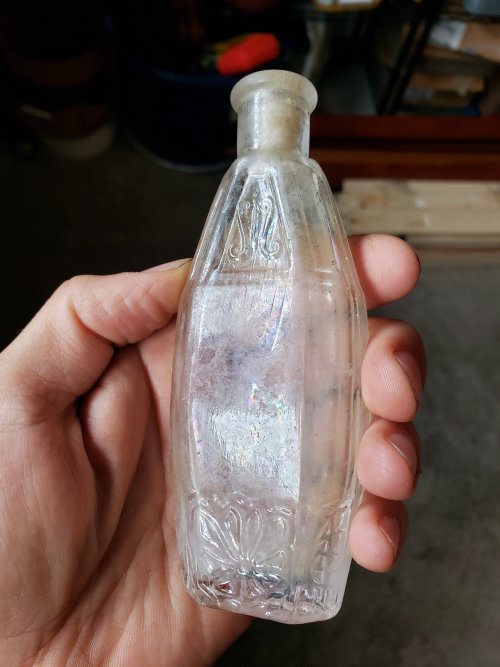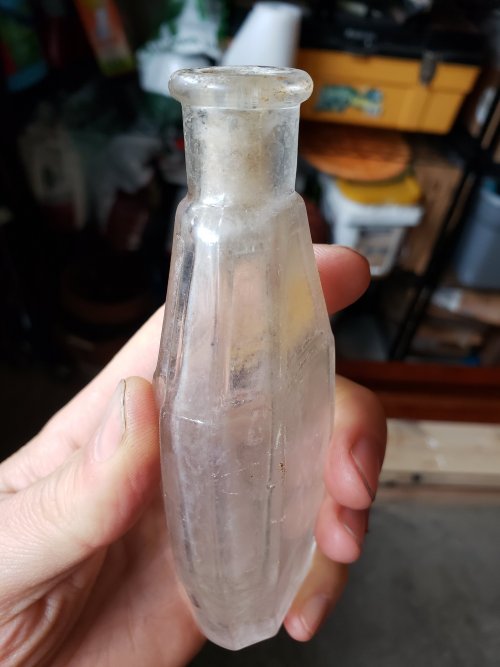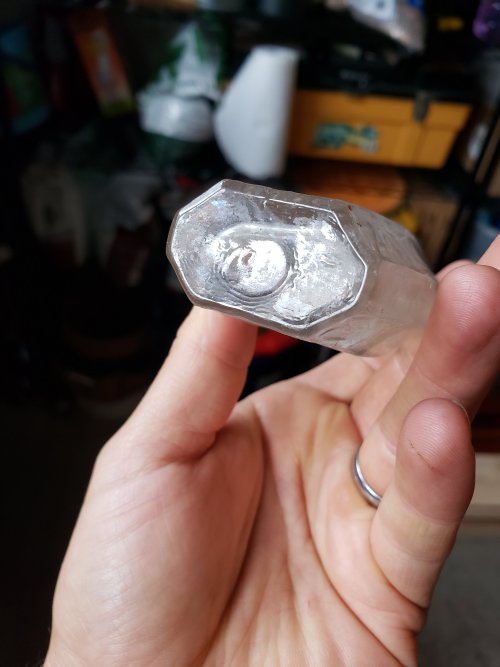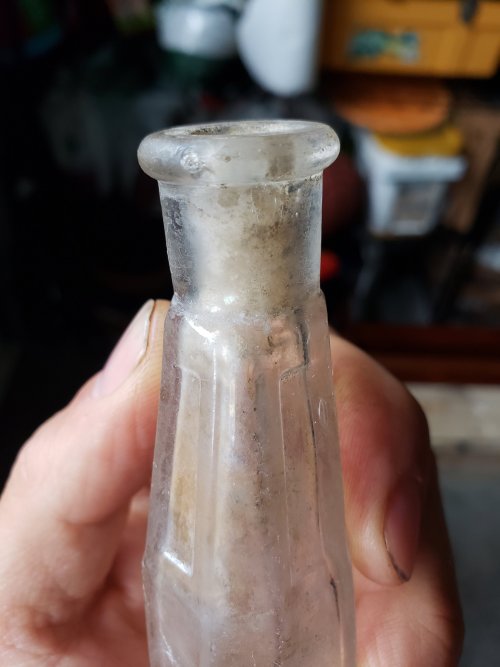Walker1200
Active Member
- Joined
- Jul 16, 2021
- Messages
- 34
- Reaction score
- 33
- Points
- 18
Hello,
I'm curious about the age of this bottle, and what it was used for. The seam looks like it stops at the shoulder. The bottom has a circular scar...would this be from a pontil? Thank you in advance! Cheers!
-Kerry
I'm curious about the age of this bottle, and what it was used for. The seam looks like it stops at the shoulder. The bottom has a circular scar...would this be from a pontil? Thank you in advance! Cheers!
-Kerry




